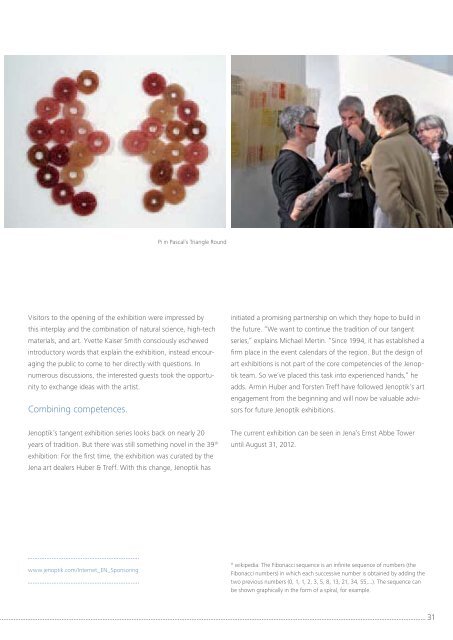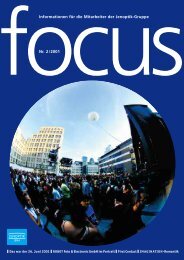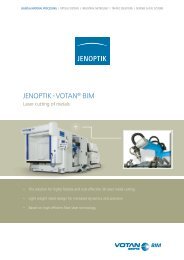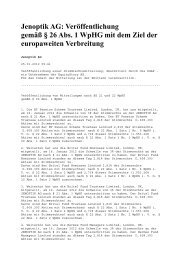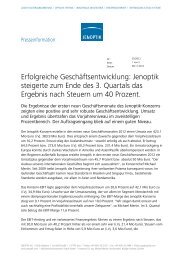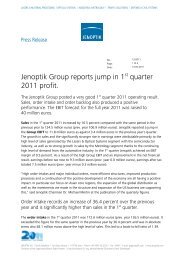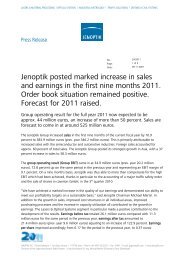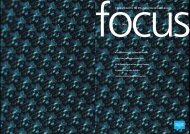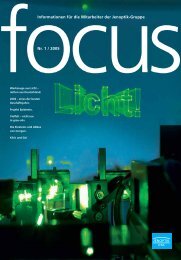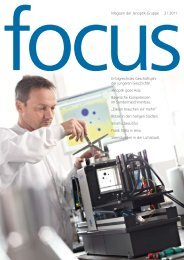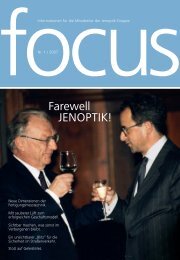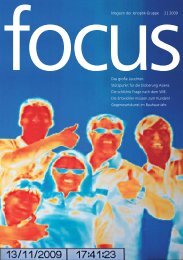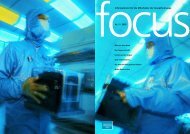normal - Jenoptik AG
normal - Jenoptik AG
normal - Jenoptik AG
Create successful ePaper yourself
Turn your PDF publications into a flip-book with our unique Google optimized e-Paper software.
Visitors to the opening of the exhibition were impressed by<br />
this interplay and the combination of natural science, high-tech<br />
materials, and art. Yvette Kaiser Smith consciously eschewed<br />
introductory words that explain the exhibition, instead encouraging<br />
the public to come to her directly with questions. In<br />
numerous discussions, the interested guests took the opportunity<br />
to exchange ideas with the artist.<br />
Combining competences.<br />
<strong>Jenoptik</strong>’s tangent exhibition series looks back on nearly 20<br />
years of tradition. But there was still something novel in the 39th exhibition: For the first time, the exhibition was curated by the<br />
Jena art dealers Huber & Treff. With this change, <strong>Jenoptik</strong> has<br />
www.jenoptik.com/Internet_EN_Sponsoring<br />
Pi in Pascal’s Triangle Round<br />
initiated a promising partnership on which they hope to build in<br />
the future. “We want to continue the tradition of our tangent<br />
series,” explains Michael Mertin. “Since 1994, it has established a<br />
firm place in the event calendars of the region. But the design of<br />
art exhibitions is not part of the core competencies of the <strong>Jenoptik</strong><br />
team. So we’ve placed this task into experienced hands,” he<br />
adds. Armin Huber and Torsten Treff have followed <strong>Jenoptik</strong>’s art<br />
engagement from the beginning and will now be valuable advisors<br />
for future <strong>Jenoptik</strong> exhibitions.<br />
The current exhibition can be seen in Jena’s Ernst Abbe Tower<br />
until August 31, 2012.<br />
* wikipedia: The Fibonacci sequence is an infinite sequence of numbers (the<br />
Fibonacci numbers) in which each successive number is obtained by adding the<br />
two previous numbers (0, 1, 1, 2, 3, 5, 8, 13, 21, 34, 55,...). The sequence can<br />
be shown graphically in the form of a spiral, for example.<br />
31


